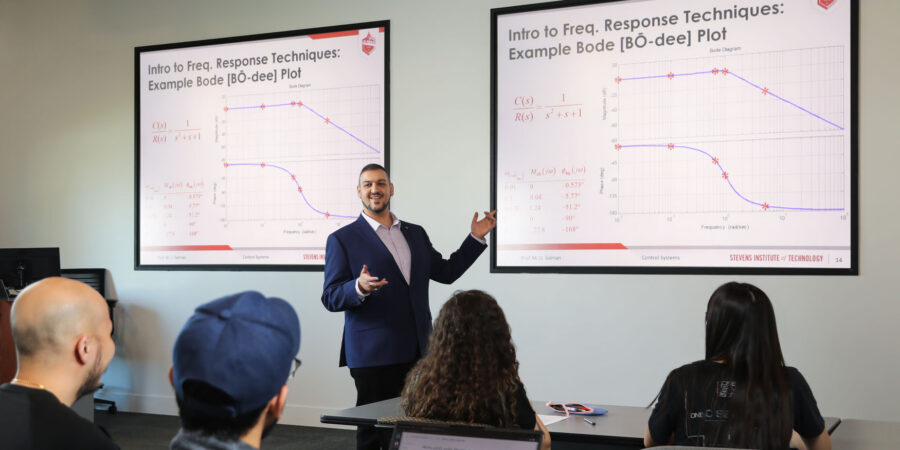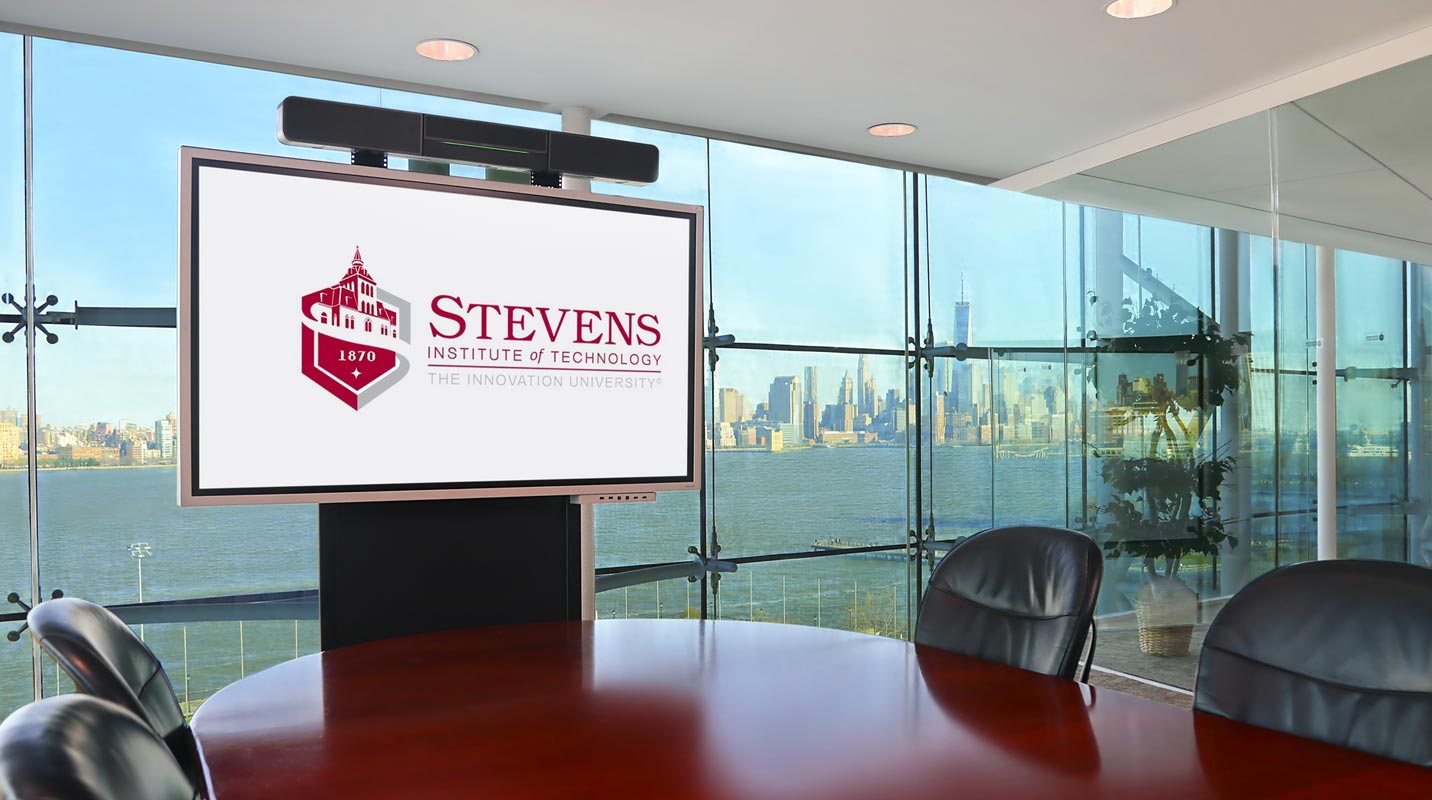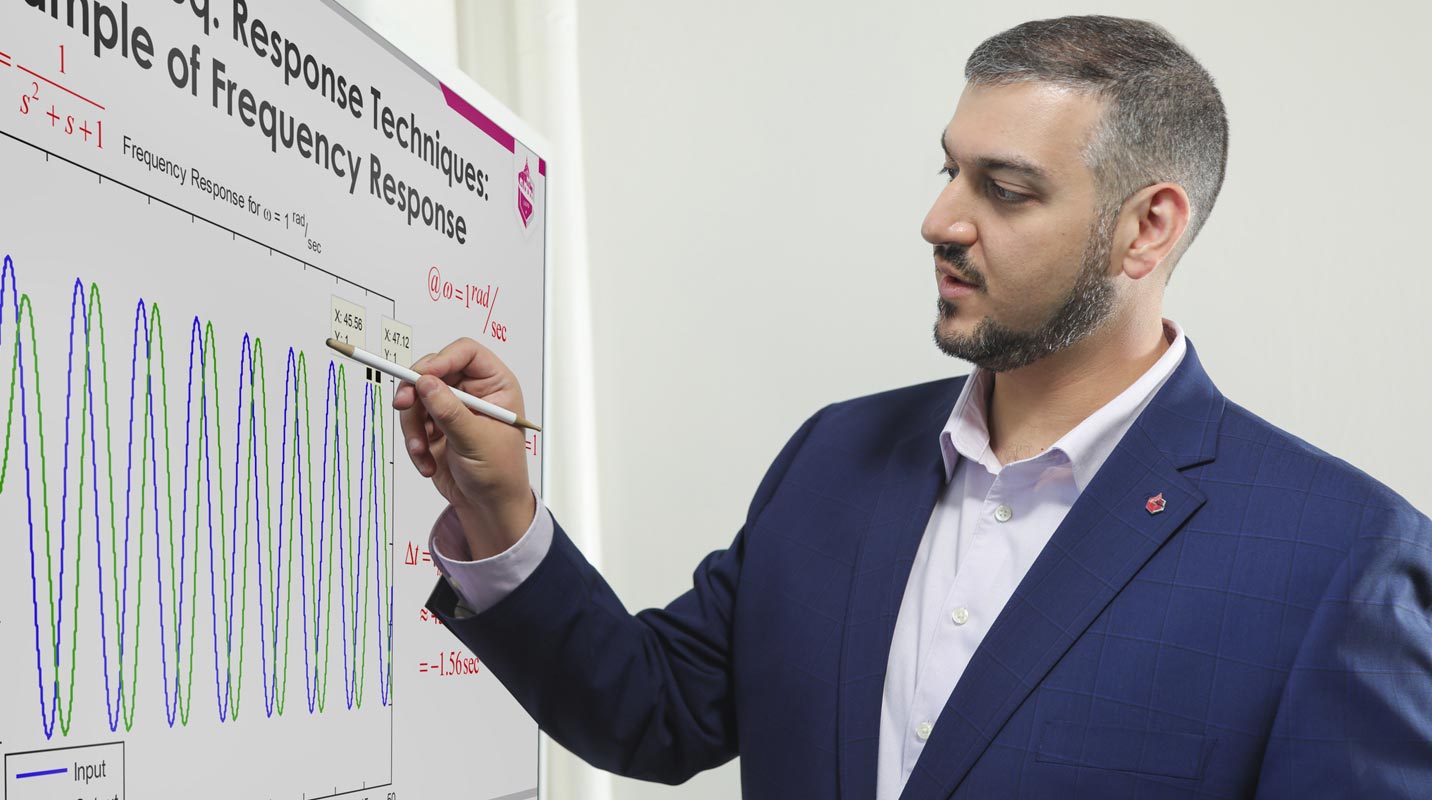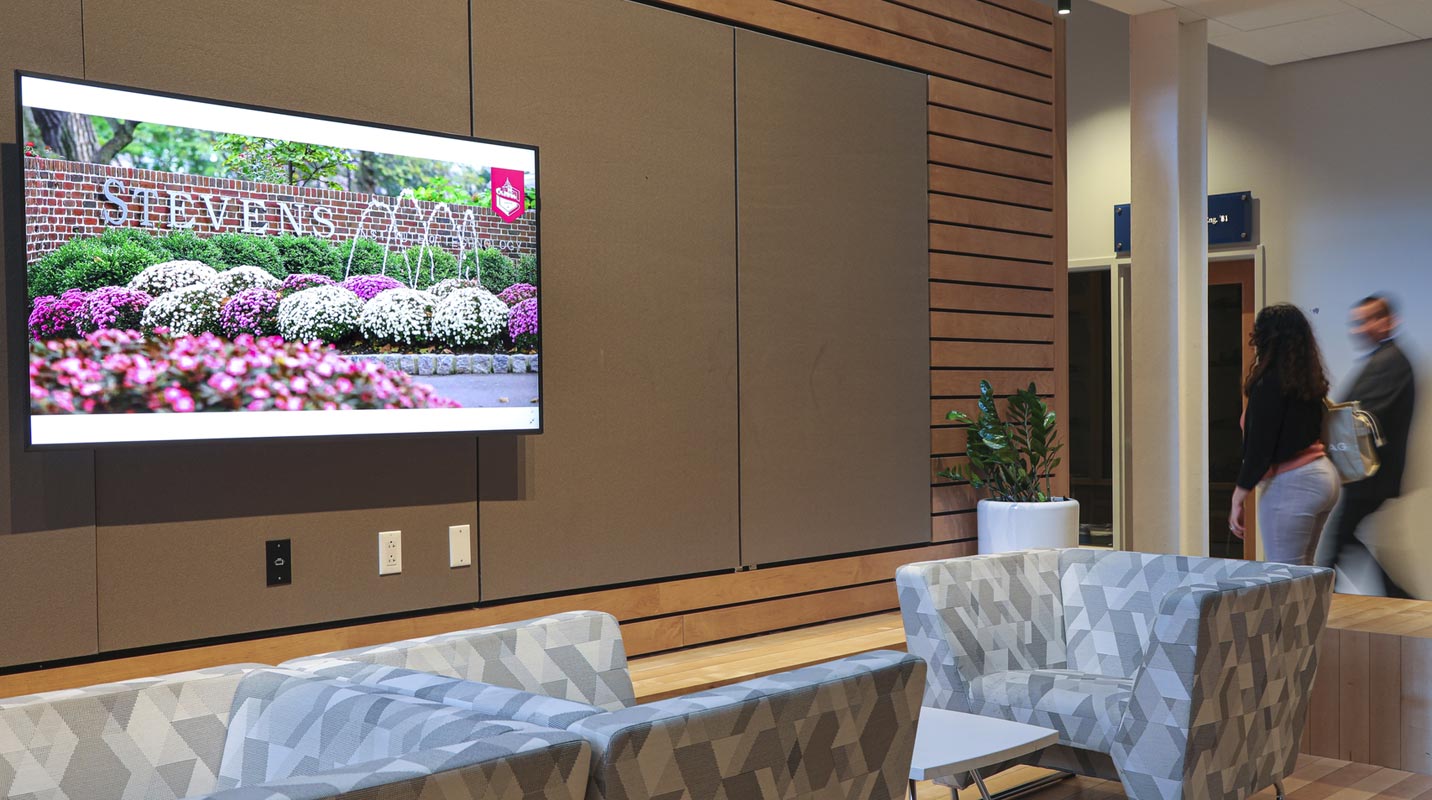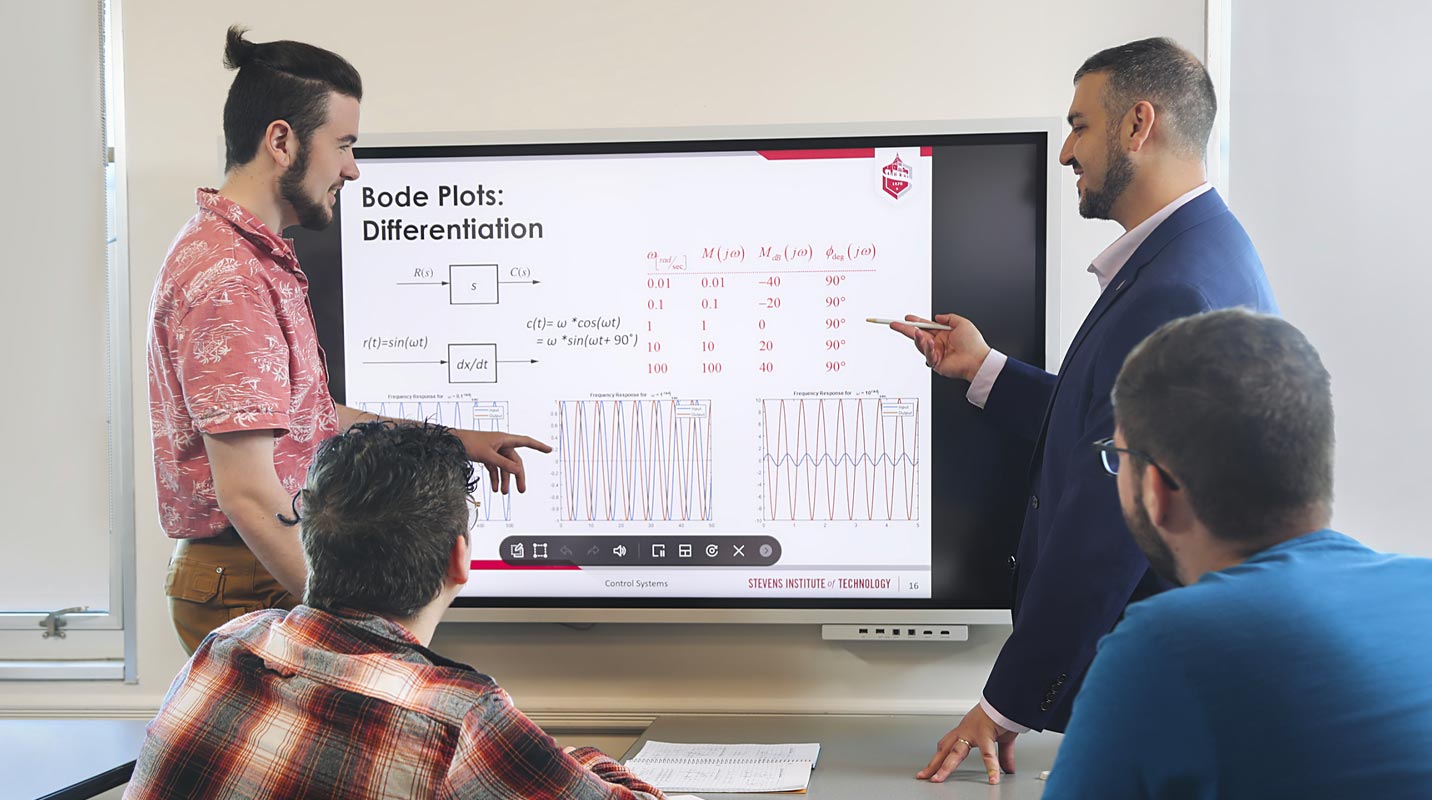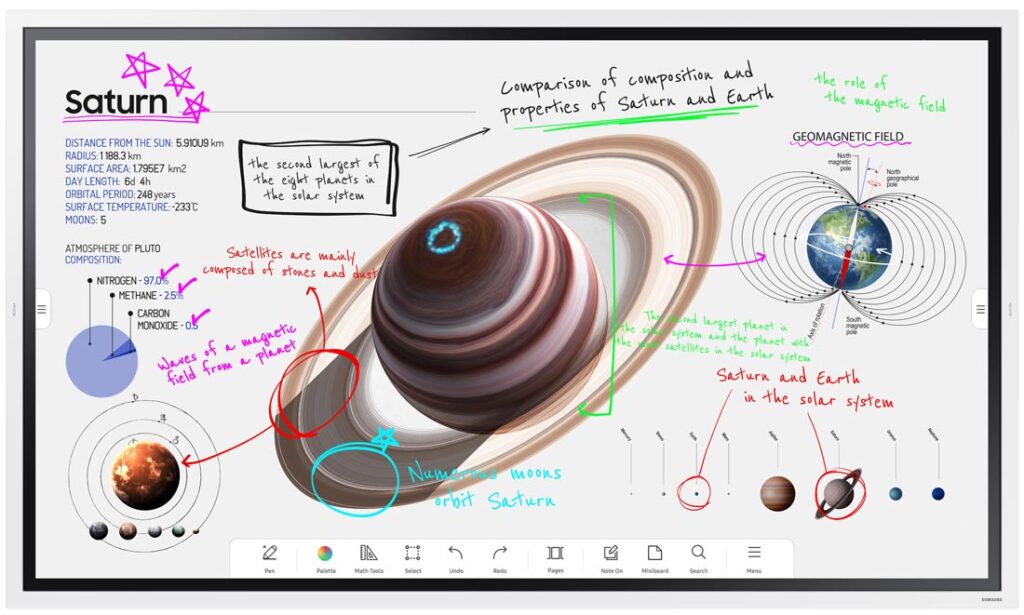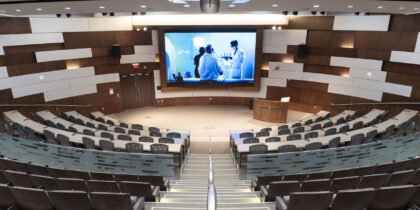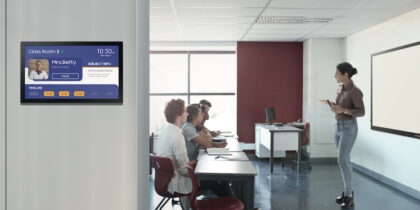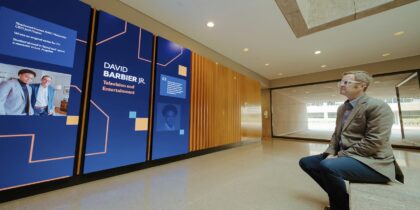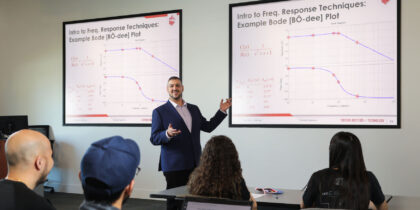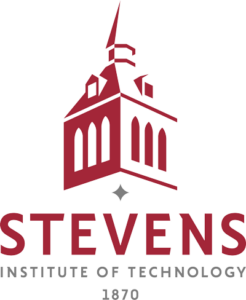
The Challenge
When university classes went online in 2020, Stevens Institute of Technology needed technology solutions that connected classrooms with minimal disruption and distractions. While the institution successfully pivoted to online learning practically overnight, leaders worked hard to continually improve the student and faculty experience. Turning a camera to face the whiteboard wasn’t ideal, and neither were the digital whiteboards that required extensive setup.
The Solution
Looking for a solution that was already on campus, Stevens leaders realized the Flip interactive display from Samsung met — and exceeded — all their requirements for remote classroom technology. With its built-in videoconferencing integrations, simple setup, ease of use, responsiveness and affordable cost, investing in more interactive whiteboards was an easy decision.
“This technology just made things more seamless and immersive for me.”
-Mishah Uzziél Salman, Teaching Associate Professor at Stevens
The Results
Stevens’ Division of Information Technology (IT) received many requests from faculty to install Samsung’s interactive displays and has since installed them throughout campus. Faculty particularly appreciate the ability to annotate directly on the screen during presentations, then download and save the screenshots or recorded lessons to the school’s learning management system (LMS). The investment in top-of-the-line technology represents the school’s commitment to its students, faculty and staff.

About Stevens Institute of Technology
Stevens Institute of Technology is a premier, private research university in Hoboken, New Jersey, overlooking the Manhattan skyline. Stevens prepares its more than 8,000 undergraduate and graduate students for an increasingly complex and technology-centric world, leveraging finance, computing, engineering and the arts to confront the most challenging problems of our time with innovative teaching and research. The university is in the top 1% nationally of colleges with the highest-paid graduates.
The Challenge
Navigating a new normal
Stevens Institute of Technology has long been a leader in online education through their excellent graduate programs. When all classes went remote in 2020, they quickly pivoted to online learning for all and leaned on videoconferencing and whiteboards as an initial solution. Certain conditions presented challenges, explains Jesus Candiotti, the academic multimedia engineer at Stevens.
“It really depended on the quality of the camera, the lighting in the room and even whether or not they were using a new whiteboard marker on the board,” Candiotti says.
The school had a few digital whiteboards from other vendors, but they offered limited capabilities. The devices required a login and license, as well as intensive setup.
“[The existing devices] were a lot more expensive, and they weren’t intuitive,” says Harry Ortiz, the school’s associate director of academic multimedia services. “They were also heavy and needed more infrastructure on the back end.”
The options also were not ideal for faculty, who came to class with multiple devices — including laptops, tablets and cameras — that required set up. Stevens engineering professor Mishah Uzziél Salman says that even once everything was set up, the camera and monitor limited his ability to walk around the room and teach as he normally does. He was also frustrated by the lag time between writing on the board and when the digital text showed up.
“It really breaks your flow,” Salman says. “You get lost without being able to keep your train of thought.”
Stevens is a school that prides itself on being at the forefront of technology, so its leaders knew they needed a new solution. The school wanted to live up to its mission “to inspire, nurture and prepare students for an increasingly complex and technology-centric world, to develop innovative solutions to the most challenging problems of our time and to expand the frontiers of knowledge.”
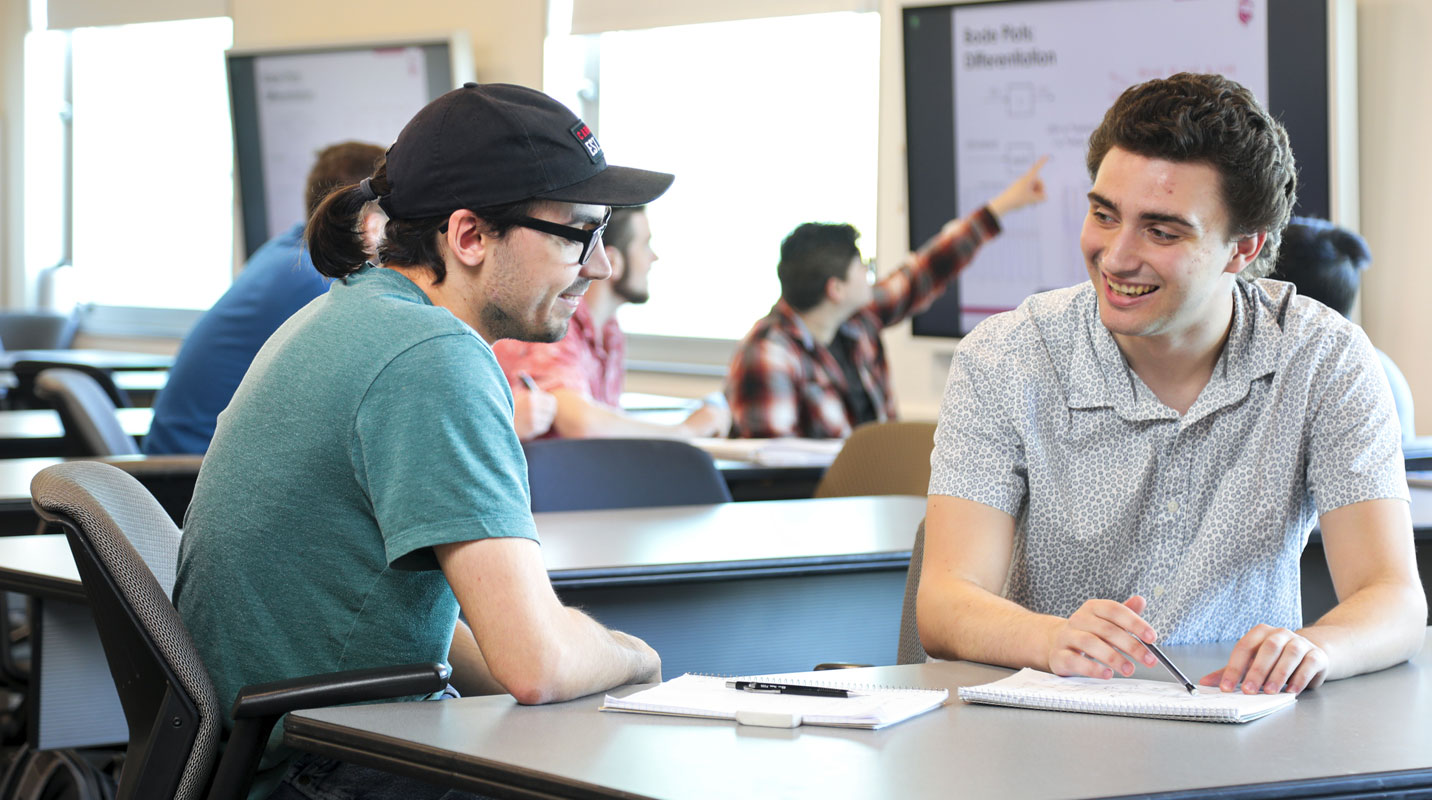
The Solution
Interactive whiteboards engage students and professors
Candiotti and the rest of the information technology team started looking for options to improve hybrid learning at Stevens. They found a solution waiting for them on campus.
The university had previously purchased two Samsung Flip 55-inch digital flipcharts, which the school was using in one of its labs. The information technology team set up one of these interactive displays in a classroom and immediately realized it was the closest that professors and remote students could get to being in the same room.
They invested in Samsung’s interactive whiteboards, which are available in 55-inch, 65-inch and 85-inch sizes and are light enough to easily move around a classroom or conference space. Its Wi-Fi and Bluetooth connectivity, HDMI connections and screen mirroring are all features that Stevens faculty needed to upgrade the online learning experience.
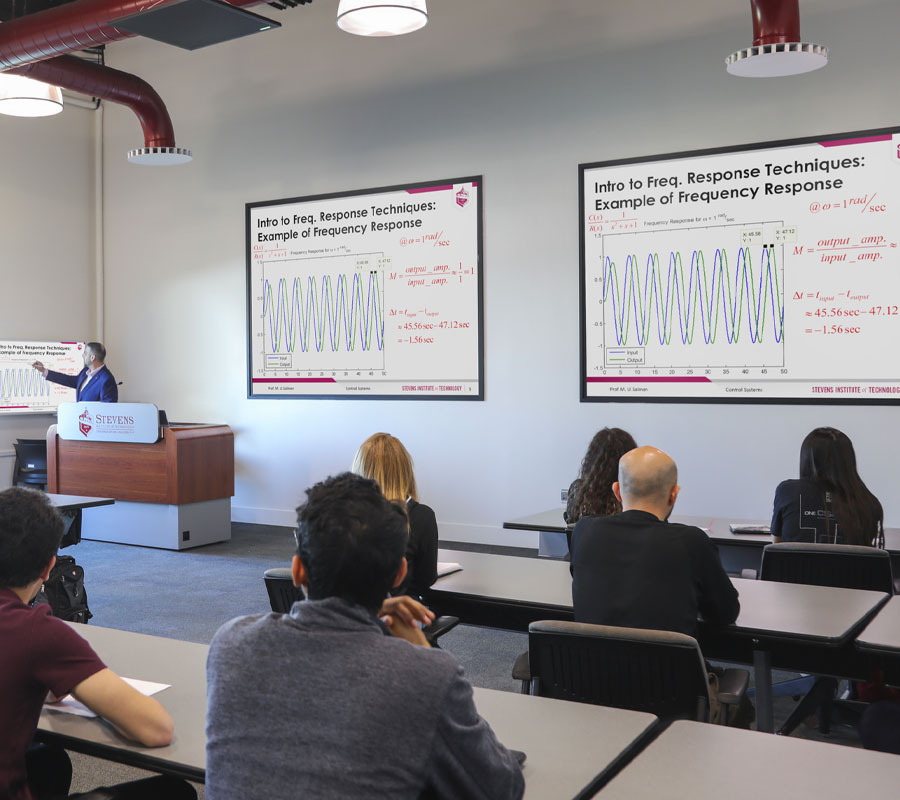
Samsung’s interactive whiteboard was also attractive because of its versatility. The board is compatible with multiple stylus and input devices, and there’s no need to log in or connect to Wi-Fi in order to use it.
“It truly is plug and play,” Ortiz says. “You just turn it on and you go. You don’t have that feature with a lot of other boards.”
Price was also a huge differentiation, adds Candiotti: “I could buy three Samsung interactive displays for what it would cost to get one smart board from other vendors.”
The interactive whiteboard integrates with videoconferencing software so professors and faculty can easily use the board to teach and present to remote students. The board’s screen is mirrored on students’ devices at home.
Once the class or meeting is over, the faculty’s entire presentation — complete with video, audio and annotations — can be saved and emailed to students, Ortiz explains. Faculty can also save screenshots and annotations made on the interactive display, rather than taking smartphone photos of a messy dry-erase board.
“Since the interactive whiteboard allows essentially infinite pages, faculty can keep filling it up, and when they’re done, they just email themselves with their own notes,” Ortiz says. “That’s something that the faculty love.”
Finally, Ortiz says the board’s responsiveness to any input device is a selling point all on its own. While other boards that Stevens tested had a lag, the interactive displays easily keep up. It also can differentiate between someone writing something and someone just leaning on the board.
Stevens didn’t stop at interactive smart boards when it came to digital signage. The school is also using Samsung displays across campus for digital signage in conference rooms, outside department buildings, in common areas and other high-traffic locations. These displays replaced legacy boards that were unwieldy, expensive and difficult to use. Digital signage allows Stevens to promote events, share campus news and quickly communicate with everyone on campus.
The Technology
65” 4K UHD Digital Flip Chart
A smooth and familiar pen-to-paper-like writing experience and versatile connectivity make Samsung’s interactive whiteboards ideal for classroom learning and collaboration. Students and teachers can use the embedded web browser to search the web and access online applications, then annotate on the board, save and send notes.
QBB Series 55"
Display any content in ultra-high definition with true-to-life color on slim and symmetrical signage. The QBB Series combines enhanced professional features, streamlined set up and maintenance, and stunning design to elevate any business environment.
The Results
Samsung’s interactive whiteboard earns an A for ease
The interactive whiteboards have since been rolled out across the Stevens campus. Salman says using the board has made what could be a challenging experience of teaching hybrid classes completely effortless. He uses two interactive whiteboards in his classroom — one in the back of the room with a gallery view of his remote students, and one in front of the room as a projection screen that he can annotate on. During lecture, the interactive whiteboards can display informational slides and videos, which Salman annotates as students watch him work through problems in real time.
Students who are attending class remotely can also annotate directly on the interactive display screen using their mouse, which shows up on the live screen. In-person students can, of course, annotate on the screen with a stylus or by writing with their finger.
“The advantages of being able to mark up freely with my hands on a board and being able to turn back to students in the room — and do this very swiftly and seamlessly — made the experience for me, for the in-person students and the remote students much better than I could have ever imagined,” Salman explains. He also appreciates being able to write in different colors and pen thicknesses and use interactive features to make his lessons pop.
Periodically, Salman asks his students if the Samsung interactive whiteboards are making their educational experiences better. Every time, he says, the response is overwhelmingly yes; students report being more engaged during classes that use the devices.
“This technology just made things more seamless and immersive for me,” Salman says. “I was more comfortable. And from my experience, I find that when I’m more comfortable and am more fluid in my approach to teaching, the students absorb more. They are more integrated within the lesson.”
Student James Lizotte agrees. He says the interactive smart board made him feel connected and integrated in the classroom even when he was attending remotely: “It makes it feel more like an actual classroom because you can see the professor and their body language. It really helped make it feel like you were talking to a person and not a video.”
The technology has simplified things for faculty and staff by cutting down the number of devices they need to bring to class. Now, educators don’t have to bring any devices at all. Everything they need can be accessed on the interactive display. Faculty who still want to use a laptop can simply connect it to the board wirelessly, no cable required.
The Stevens information technology team appreciates the interactive whiteboard’s simplicity of use. After a few minutes, without any in-depth training, even the least tech-savvy professors can use it on their own, Ortiz says.
“It’s gotten to a point where the Samsung interactive whiteboard is specifically something that professors request,” Ortiz says. “Everywhere from people’s offices to lab spaces to student lounges; we’re starting to get requests for them.” It’s why Stevens currently owns 50 interactive whiteboards, with plans to purchase more in the immediate future.
The school is now designing its new classrooms and buildings with interactive technology at the core. The just-opened, state-of-the-art University Center Complex, for example, has interactive smart boards throughout.
Ortiz says this innovative technology is a differentiator for Stevens, and something that builds a sense of pride among faculty, staff and students.
“You expect to have high-end technology that doesn’t just look cool,” says Ortiz. “You also need to have it be functional and easy to use. For people who want to work here, for people who want to go to school here, this shows that Stevens is serious when we say collaboration and innovation are core values of the university.”
